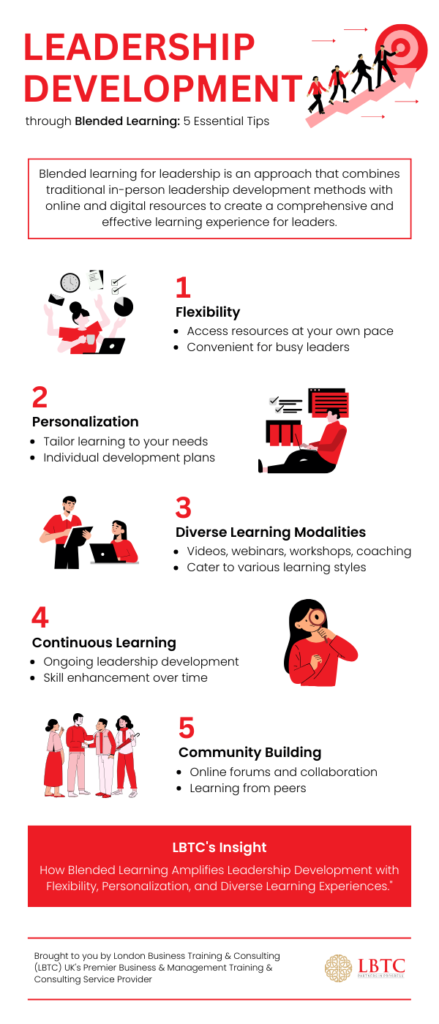
The one-and-done method of developing leaders is no longer relevant. Some leadership development programmes encourage new managers to complete a week-long training course before releasing them into the field with little to no follow-up or ongoing training.
Employee turnover is at an all-time high due to the changing nature of the workforce, and new skill sets are required to succeed. Employers must provide leadership development opportunities for not just the entire organisation but also for the leadership, as they are the ones who lack the necessary tools. It can boost employee engagement and encourage creativity, resulting in corporate expansion.
Jack Foster, vice president of marketing at WorkRamp, said, “Over the last couple of years, a lot of enablement leaders have been focused on helping sales carrying reps with how they can get caught up to speed.” But we’ve seen a change in that enablement teams now place a lot of emphasis on leaders and leadership programmes.
These are the foundations your business needs to create a potent leadership development programme, regardless of whether you already have training in place or need to start from scratch.
Creating the Groundwork for Leadership Education
The best in your employees is brought out by leadership enablement, which promotes a culture of ongoing learning, development, and progress.
Participants in upskilling programmes indicate progress in several categories, according to Gallup’s The American Upskilling Study report:
- 71% report an increase in overall job satisfaction.
- Sixty-five per cent of people claim that their level of life has risen.
- It has gotten better overall, according to 69% of people.
Leadership development is a necessity rather than a nice-to-have.
“The Great Resignation is one of the significant events we’ve witnessed in this COVID era. Stephanie Middaugh, director of enablement at WorkRamp, also notes that we are losing excellent leaders, managers and individual contributors. “It is essential that we provide possibilities for professional growth not only for our managers and leaders but also for our contributors. We are ensuring that they receive proper treatment.
It’s crucial to lay down the following when constructing your foundation:
- key principles
- Goals
- Training
- many degrees of leadership
Everything is built on leadership, and an organisation’s ability to generate good leaders impacts its operational objectives.
Your Core Values
Multiple hats, adaptability, and authenticity make a good leader.
To help each person develop into a strong leader, it is crucial to have them establish their fundamental beliefs while laying the foundation for what a leadership programme should look like.
You can set up a foundation for the content to use, define your leadership development “why,” and ensure that everyone agrees on what it means to be a leader by asking your current leadership team and potential leaders about the essential core values they consider to be a leader and then aligning it with the organisation.
Your Goals
Clearly define your leadership program’s goals. It is essential to know what you want your current and future leaders to gain from it. Ensure transparency in your objectives, as it increases information retention and program benefits. Stephanie Middaugh emphasises setting clear goals and measuring them using tools like an LMS system, which allows you to track engagement, grades, and completion rates. This information helps demonstrate the program’s impact on learners when you roll it out again.
Delivering the training
Practical training involves breaking it into shorter, focused sessions rather than long hours in a classroom. Research supports this approach for better retention. Online platforms like WorkRamp enable companies to create or source training materials and structure them into shorter segments. This allows for flexibility in live training and continuous learning. Instructors can monitor what’s retained and adapt future programs accordingly. Features like questions, quizzes, and gamification enhance engagement. Additionally, one-on-one mentoring and shadowing complement online learning, with questionnaires linking the insights gained to practical implementation in management styles.
Taking Charge at All Levels
Leaders come in different shapes and sizes, and as new challenges appear in the workplace, they must adapt and develop the skills to deal with them. As a result, leadership development needs to be ongoing. After your first leadership training, it continues. A novice manager, however, has different requirements or needs the same training as an experienced manager. It is crucial to customise your leadership training at all levels and include the competencies they will require as they progress.
Building Leadership Capacity Promotes Long-Term Success
When done correctly, leadership development programmes assist businesses in maximising the potential of their talent pools at all levels and equip leaders to take on various issues.
The process of leadership is ongoing and constantly changing. Including this in your organisation’s learning culture can aid in talent retention and foster employee development, which benefits the company’s expansion. Learning is an engine for growth. Examine how the LBTC leadership course can help you reach your workforce with your leadership development programme.


Leave a Reply